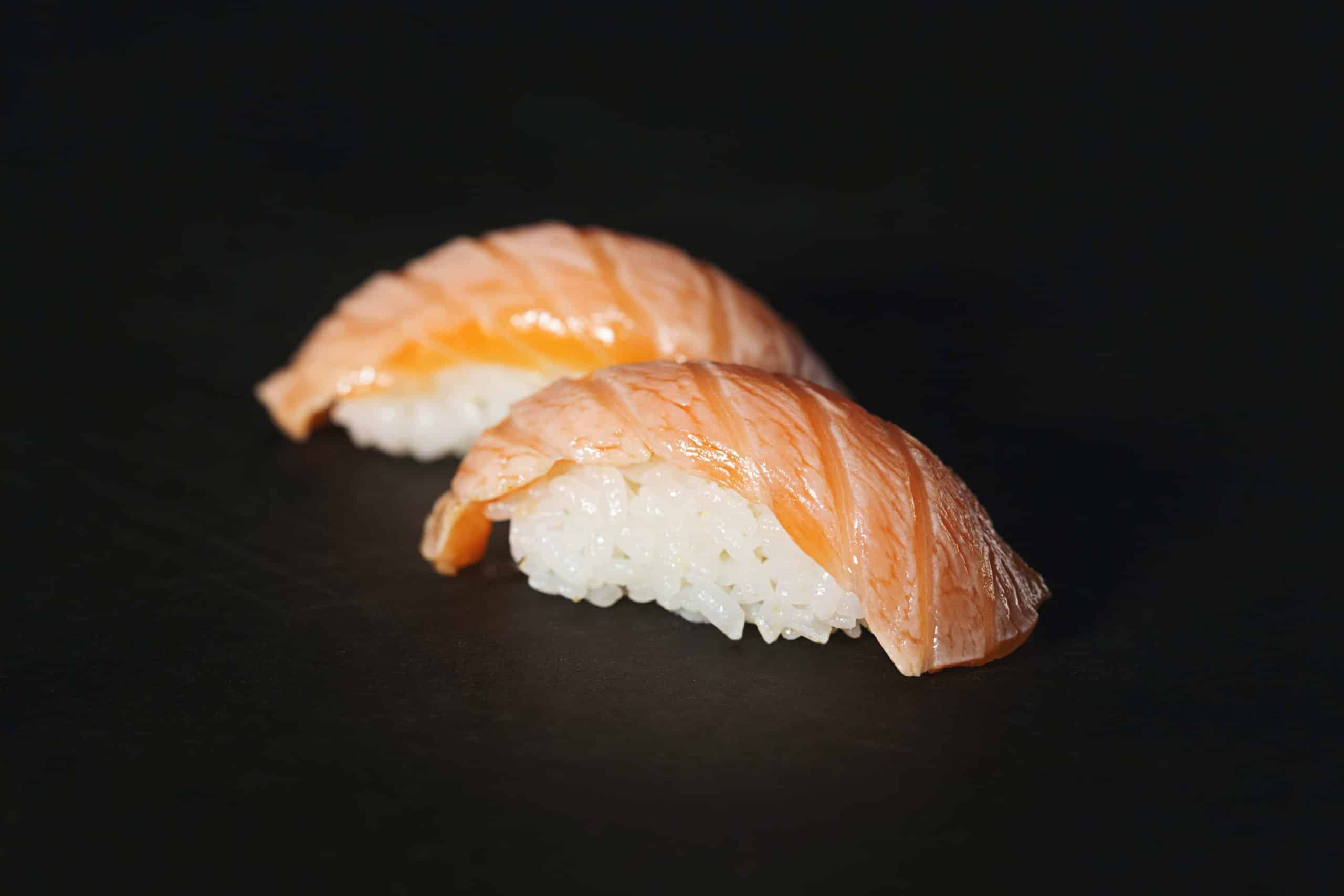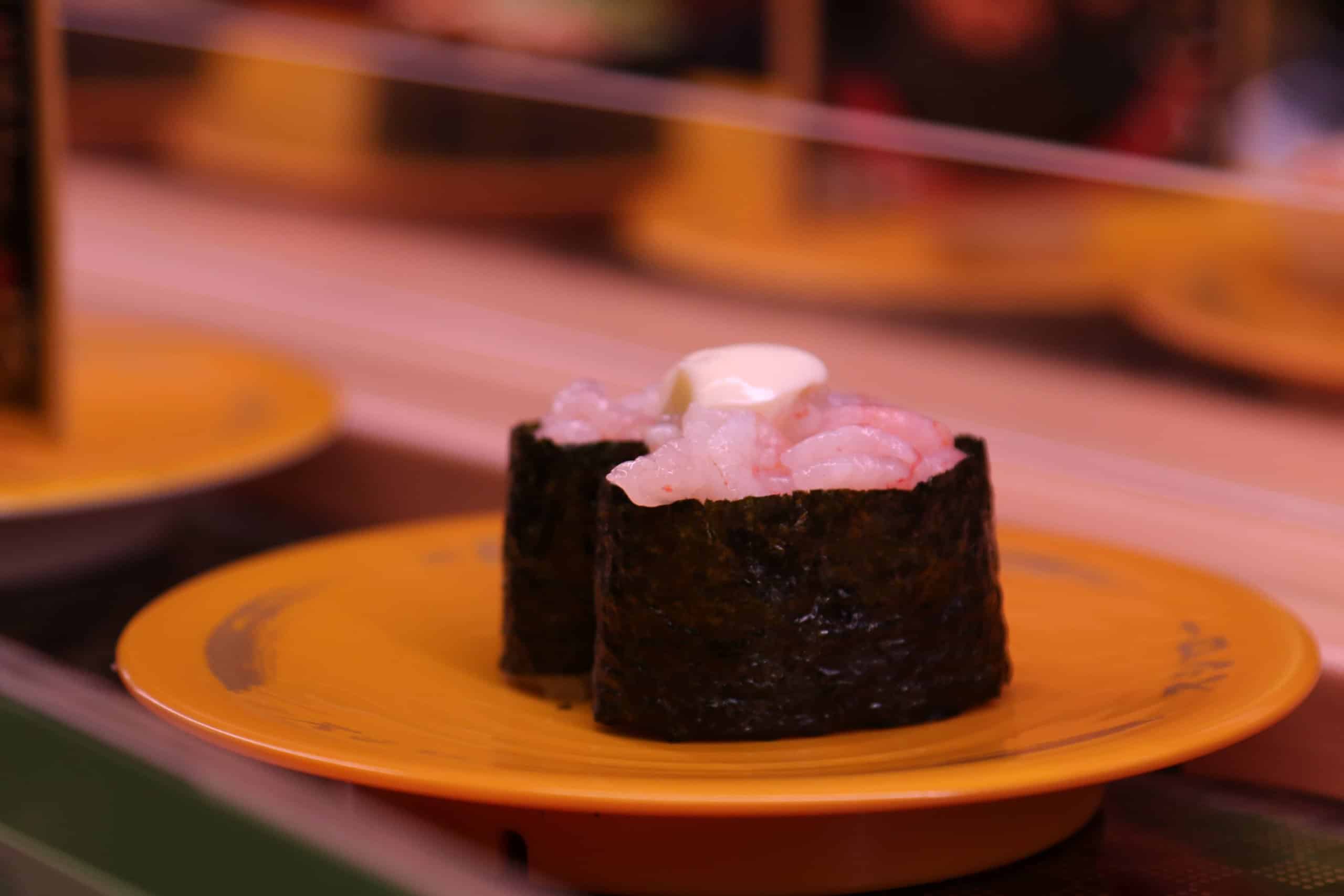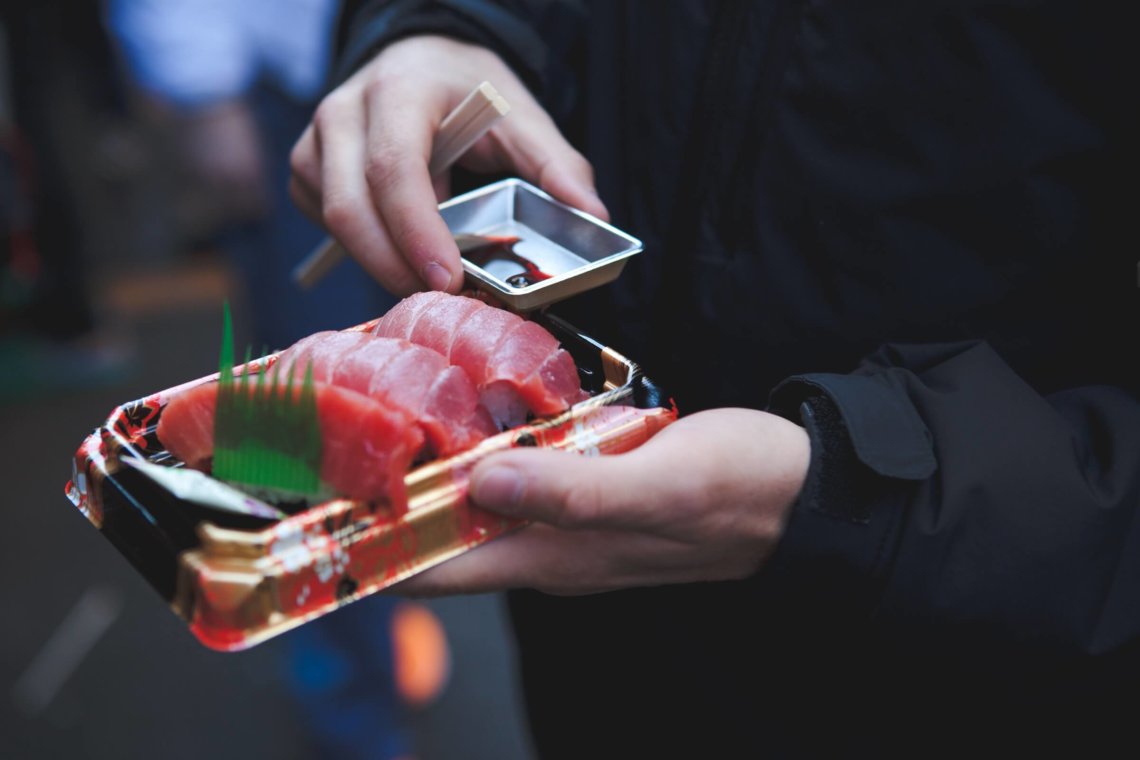Despite its global popularity sushi is often misunderstood, so to help food-loving travelers we’ve put together this short list of the most common myths and misconceptions about sushi in Japan.
Sushi is arguably the most famous Japanese dish outside of Japan, and it is cherished among Japanese people, and often enjoyed on special occasions and celebrations. It consists of prepared rice accompanied by seafood (often raw) and different vegetables, although its style of preparation varies widely.
If you’re a true sushi connoisseur (we know you’re out there!), or a frequent visitor to Japan, these probably won’t surprise you. On the other hand, if you’ve never been to Japan — or are simply a sushi “rookie” (no shame!) — we hope these insights help you get the most out of your sushi experiences in Japan.
For a little extra context we begin with some background on sushi’s origins, but to skip ahead simply click below:
- Myth: Fresher Equals Better
- Myth: It’s All About the Fish
- Myth: Sushi is a Common, Everyday Food
- Myth: The Best Sushi Shops Have Michelin Stars
For more on eating sushi in Japan, also see our posts on essential sushi etiquette, and Tokyo’s best sushi restaurants.

A Brief History of Sushi in Japan
Japanese sushi as we know it today is a relatively new phenomenon, but sushi’s history stretches back a couple of thousand years. It’s believed that sushi has its origins in Southeast Asia, having developed as a means of preserving fish using fermented rice.
Even within Japan, sushi has a long history and only gradually evolved into what we recognize as sushi today. Lovers of Japanese food with an adventurous palate can get a taste of what olden-day sushi might have been like by visiting Lake Biwa (not far from Kyoto) and trying the local specialty, funazushi.
While sushi continues to evolve, a major turning point in its development took place in the great city of Edo (modern-day Tokyo) in the early 19th century. In the bustling city of Edo, a new style of sushi emerged, which became what we now call Edomae sushi. The innovators of Edomae sushi placed pieces of fish and other ingredients from Edo Bay (Tokyo Bay) atop balls of vinegared rice.
Thus was born one of the most delicious fast foods the world has ever seen, and fortunately for us this new form of sushi — served from Edo food carts — caught on.
As Edo-era sushi sellers didn’t have the luxury of refrigeration, they came up with innovative and delicious ways to give their products a longer shelf life. To this end, many of the ingredients were simmered or cured in vinegar or soy sauce, or cooked in some way.
Nowadays, sushi featuring raw fish is more popular than ever, but in traditional Edomae sushi it’s very common for the neta (the topping, e.g., the fish) to be cooked or cured in some way. Which leads us perfectly to our first, and perhaps the most common, misconception about sushi.

Myth: Fresher Equals Better
Many casual sushi lovers are under the impression that the best sushi in the world is always the freshest. But this simply isn’t the case.
As our culinary-minded friend Rebekah Wilson-Lye puts it succinctly, “If you’re eating the freshest sushi in the world, you’re not necessarily eating the greatest sushi in the world.“
While some ingredients, such as uni, are usually best as fresh as possible, others are best after aging or other forms of preparation. For example, tuna — one of the most popular sushi neta — is typically aged for 3 or 4 days, and in some sushi-ya (sushi shops) up to 2 weeks.
In general, fish right out of the water doesn’t yet have a considerable amount of flavor. This is particularly true when it comes to white fish, which are extra taut and muscly, with little fat. It takes time for a fish to begin breaking down, and for amino acids to be released. One way this is done by sushi chefs is by placing a cut of fish between sheets of kombu (kelp) and allowing it to age, to bring out the fish’s umami.
A great sushi chef knows when a fish or ingredient will taste its best, and this can vary greatly from fish to fish, and season to season.
When dining at one of Tokyo’s top Edomae sushi establishments (for more on these see Myth 4 below), you’re likely to have the chance to enjoy a wide variety of preparations, including neta that have been cured, aged, simmered, or par-boiled.

Myth: It’s All About the Fish
If you’ve ever had good sushi in Japan, then you already know that the quality of the shari (rice) is just as important as the quality of the neta.
Sushi novices tend to place all the emphasis on the neta, and fail to appreciate what many sushi connoisseurs consider the real treat: the shari.
Far from a mere filler, there is a delicate art involved in preparing shari, with many different techniques. Sushi rice is typically comprised of meticulously-cooked white rice, mixed with red or white vinegar, sugar, and salt.
Every great sushi chef pays extreme attention to each step of the process, from procurement of the finest sushi rice to its perfect preparation.
As Rebekah says, “If you’re going to spend a lot of money on the tuna, it’s always going to be good. But it’s the chef nailing the seemingly simple — but mindbogglingly detailed — elements, like the rice, that make sushi so much more beautiful than the sum of its parts.“
Myth: Sushi is a Common, Everyday Food
A surprisingly common myth is that Japanese people, in general, eat sushi often. While this may be true for “hardcore” sushi enthusiasts, for most people sushi is far from an everyday food.
One basic reason for this is the sheer diversity of Japanese cuisine. Additionally, as Rebekah shares, “Just as for foreigners, sushi-ya can be intimidating, formal, traditional spaces.“
So while it may be fairly common for people in Japan to grab a quick, casual sushi bento from a convenience store or supermarket, dining at a sushi “shrine” or “temple” is typically a rare and special occasion.
Most neighborhood sushi establishments are a bit more casual, but anytime you go out for sushi is an experience to be cherished!

Myth: The Best Sushi Shops Have Michelin Stars
With more Michelin stars than anywhere else on Earth, you might think that people in Japan would wholeheartedly embrace the famed culinary guide.
However, the truth is that the Michelin Guide is somewhat controversial in Japan, and at times Japanese critics and diners are at odds with what Michelin’s inspectors have opined.
While Michelin stars are certainly symbols of quality, some of Tokyo’s best sushi shops don’t have Michelin stars, yet are extremely respected in Japan (in addition to our list, we also recommend the food website Tabelog’s list of best sushi shops).
So when trying to decide on a sushi restaurant or two at which to splurge, look beyond Michelin if possible. While the Michelin Guide is not a bad place for English speakers to begin, it’s not the end-all-be-all guide it’s sometimes made out to be.
We hope this article helps you get the most out of your sushi experiences in Japan! For more travel tips, also see our post on the top myths about Japan travel.



